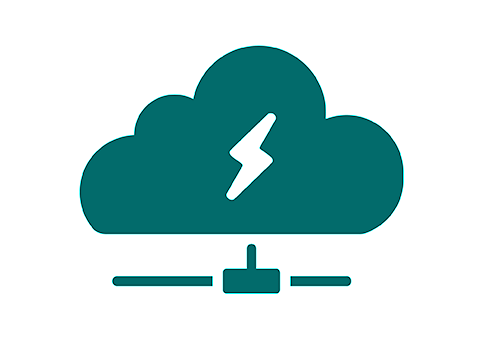Socket.IO CDN
A recent innovation in web design is the use of interactive and animated elements such as hover states, cohesive videos, parallax scrolling, and large and responsive hero images. There are many programming languages that you can use to make your static website interactive, including JavaScript, Java, C++, C#, PHP, and Python. Examples of JavaScript libraries and frameworks for making websites with attractive visual and dynamic effects are jQuery, Socket.IO, React, Angular, Vue.js, and MooTools.

Socket.IO is a popular npm module and one of the most powerful JavaScript frameworks on GitHub. It has two components: a client-side library for the browser and a server-side library for Node.js. It is ideal for multiplayer games or real-time web applications, with features ranging from asynchronous I/O to broadcasting and multiple sockets. It allows real-time analytics, binary streaming, instant messaging and chat, and document collaboration. You can use Flash Socket.IO as a cross-browser WebSocket or with the Express framework to create animation and special effects.
A website full of interactive elements, whether created using Socket.IO or some other JavaScript library, is not enough to generate traffic: it must be fast and responsive as well. A content delivery network (CDN) can speed up your interactive website by accelerating the loading times of animations. Socket.IO can be downloaded at GitHub or served from a CDN such as CDNJS, Incapsula, MaxCDN, Cloudflare, Google Cloud, Amazon CloudFront, and BelugaCDN (https://www.belugacdn.com). But how do you choose the best Socket.IO CDN Client for your website?
Choosing the Right CDN
To help you make an informed decision when searching for a CDN service provider that will accelerate your interactive website and at the same time make it highly optimized for mobile browsing, consider the following criteria:
- Performance
Content delivery network companies must have the technology to make your animation-filled web pages load fast enough to prevent your visitors from leaving in disappointment. Ask how fast the CDN’s edge servers can process highly interactive content, taking into account the latency and throughput, or whether the CDN has intelligent automation and controls for enhancing user experiences regardless of device type, distance to origin servers, or the volume of network traffic.
Speaking of traffic, a CDN should be able to provide network capacity on-demand in case your website encounters unexpected increases in the number of visitors. In addition, it should be capable of accelerating API and mobile apps using techniques such as dynamic acceleration, caching metering/prioritization of API, or edge authentication. - Security
Cybercriminals will always look for ways to attack your website, so it is important for a Socket.IO stream CDN to have an infrastructure that provides numerous layers of security against all forms of cyber threats that can cause network slowdowns or outages. Check whether the CDN service provider has the tools to block bots and malware, mitigate DDoS attacks, and detect and avert other malicious activities like DNS queries. Two such tools are custom SSL certificates and the Transport Layer Security (TLS) protocol. - Technical support
You can count on a content delivery network company to keep your website optimized and secure if it has a team of experts dedicated to providing live technical support 24/7/365 and addressing even the most complex challenges by phone or email. The team should be proactive in monitoring your website, giving you real-time, up-to-the-second insights about your HTTP traffic – for example, total bandwidth, number of hits/misses, completion ratio, origin request rate, end-user transmission, etc. - APIs
APIs allow CDNs to be more flexible, offer better security, and provide their clients with a host of features relating to account management, configurations, analytics, hosts, origins, creation of user profiles, etc. - Pricing
Many content delivery networks don’t come cheap. For monthly traffic of 2,500 GB, for example, MaxCDN costs $150, while Google Cloud, Amazon CloudFront, and Microsoft Azure charge between $200 and $218. If you’re a blogger and you need more bandwidth, you could be paying as much as $2,000 a month for 25 TB of bandwidth. It is important to compare plans and choose the one based on your requirements to avoid paying for services that you don’t really need.
In Conclusion
Interactive websites provide a great user experience, which in turn can result in higher traffic. On the other hand, if your videos are buffering or your web pages are slow to load because of too many CSS3 animations or colorful illustrations, your visitors will not hesitate to leave and look for other websites. A Socket.IO CDN can speed up your interactive website and keep it running optimally so that your visitors will have a seamless experience when browsing.
BelugaCDN (https://www.belugacdn.com) leverages the power of an IPv4/IPv6 dual-stack network to accelerate your interactive website, blog, downloads, videos, images, etc. by 20-40 percent – for 1/4 the cost of other CDNs. For monthly traffic of 2,500 GB, BelugaCDN charges $20 compared to $150 by MaxCDN, $200 by Google Cloud, $213 by Amazon CloudFront, and $218 by Microsoft Azure.
At this price, BelugaCDN also comes with built-in protection for your website against DDoS attacks, along with other benefits such as real-time analytics, unlimited cache purge, API, custom SSL, secure token, and responsive technical support. It also boasts enterprise features for video and SSL/TLS, which are particularly suitable for websites engaged in video streaming and Internet Protocol Television (IPTV)/Over the Top (OTT) services, media, and advertising. BelugaCDN offers a no-obligation free trial for 30 days and uses a pay-as-you-go billing model.
Content Delivery Network In Wordpress